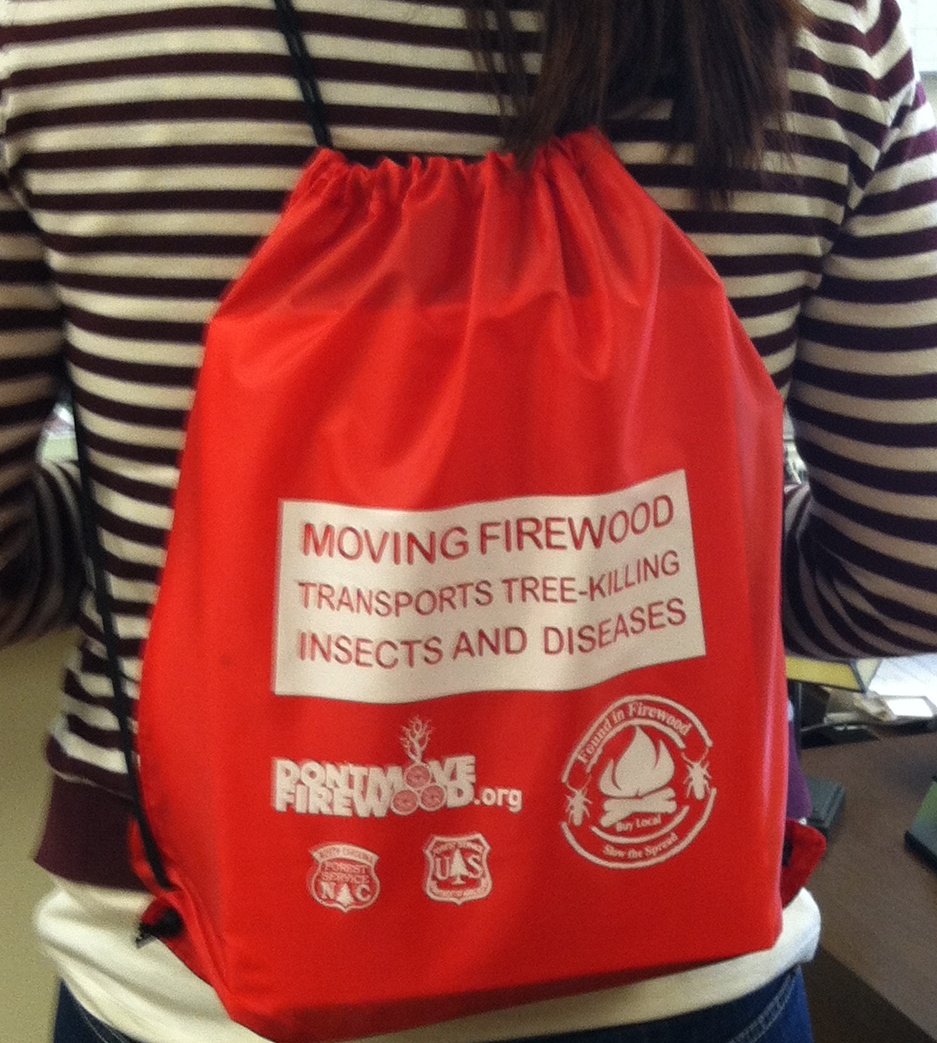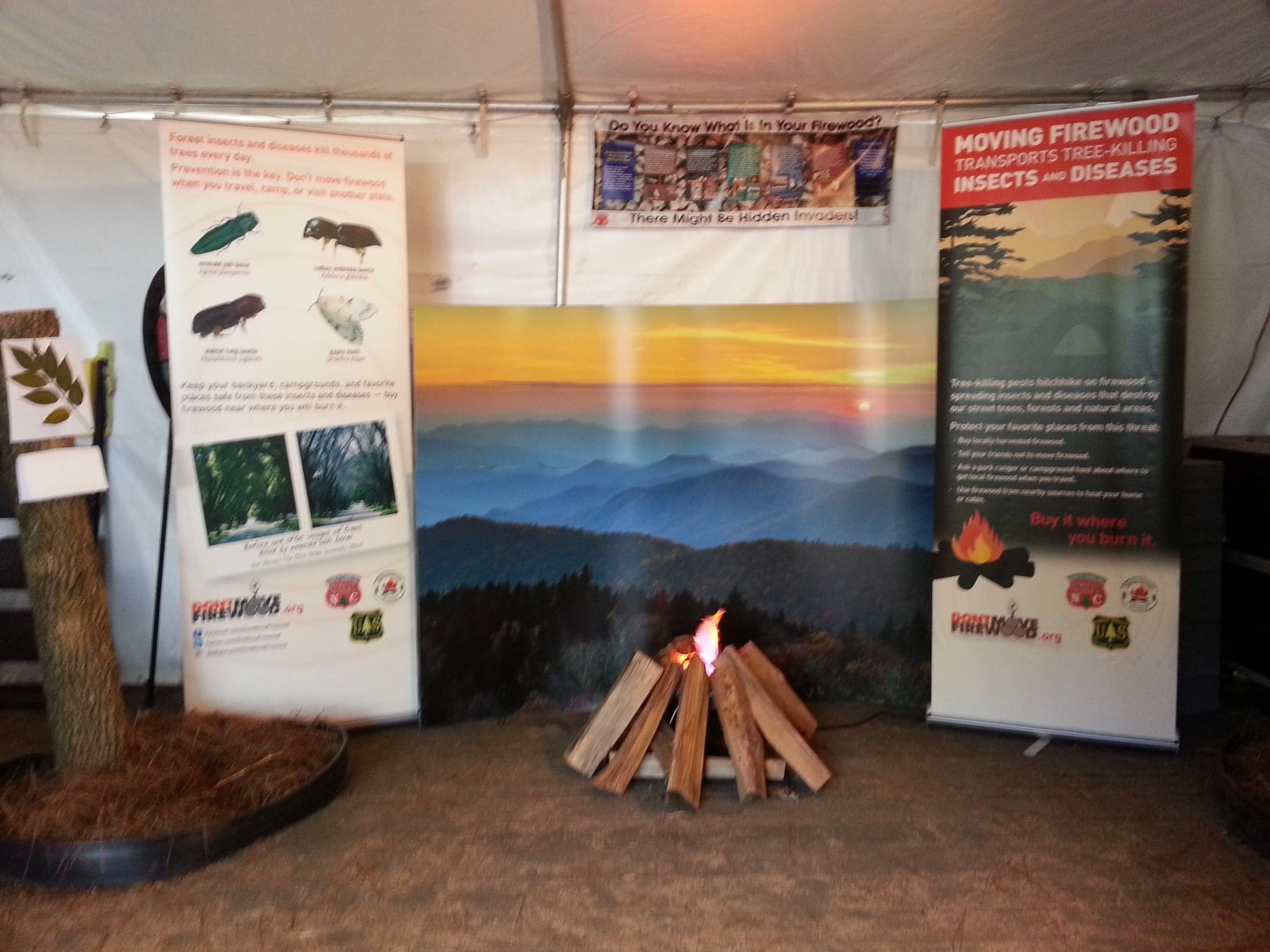Guest blog by Rob Trickel, North Carolina Forest Service, Forest Health Branch Head
Thousands of visitors to the North Carolina State Fair became walking billboards for the North Carolina Forest Service Don’t Move Firewood campaign this fall. Each visitor to the Fair's Forest was given the opportunity to answer a scavenger hunt type quiz in the Forest Service’s tent; once they answered all the questions they received a red drawstring backpack with a “don’t move firewood” message on the back.

“As folks return home and use the backpack, they are spreading our Don’t Move Firewood message,” said Sara Thompson, Forest Health Specialist. “In some cases these bags will travel across the state much like firewood does. The difference is there are no invasive pests in the bags like there could be with firewood.”
According to Thompson, the purpose of the quiz was to get people engaged and actively looking at the exhibits, where all the answers could be found. While most of questions were related to forest health, there were a few thrown in to cover other programs offered through the N.C. Forest Service.
The quiz was given to individuals, families and small groups, some of whom worked together to get all the answers. Regardless of how many people it took to find the answers, everyone in the family or group who participated won a backpack if they wanted one. Once the quiz was completed, they were turned in to a ranger who reviewed the answers and took the opportunity to have a teachable moment and speak with the participants before giving out the backpack. The overwhelming majority of those that participated liked the quiz and said they learned a lot. Many commented that they would have never guessed that firewood movement could have such consequences. The N.C. Forest Service gave out approximately 6,000 backpacks during the 10 days of the fair. Many of these backpacks, or walking billboards, spread to the message to an even larger audience of fairgoers throughout the mid-way.
The N.C. Forest Service decided to change the exhibits in the tent this year in the hopes of motivating visitors to be more engaged.

“In past few years, people just walk through the forestry exhibit and maybe read a few items that catch their attention,” said Rob Trickel, N.C. Forest Service Forest Health Branch Head. “The only ones who would really engage us were the ones who wanted to tell us a story about their land or ask a question about why their trees were dying. This year, people were engaged, talked to us, asked questions—it was more fun than usual because we were busy all of the time.”
Trickel reports that on one Saturday there were close to 30 people working in groups or individually on the “scavenger hunt” at the same time several times during the day—sometimes lined up 3 deep at a table or poster reading information. The popularity of this year’s program has prompted the N.C. Forest Service to consider having two “levels” of quiz’s next year, one similar in complexity to this year’s for most people and one very simple for younger kids or parents with small children.



